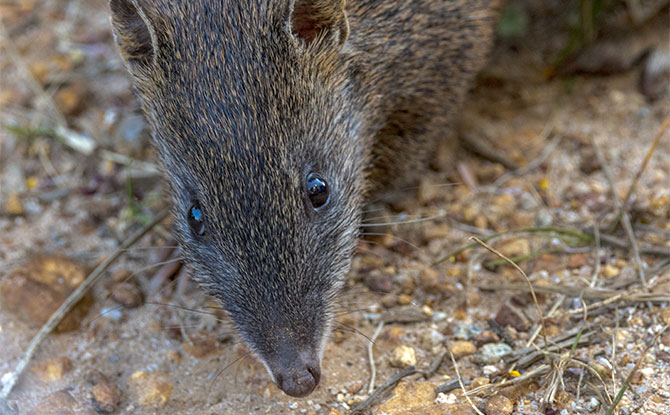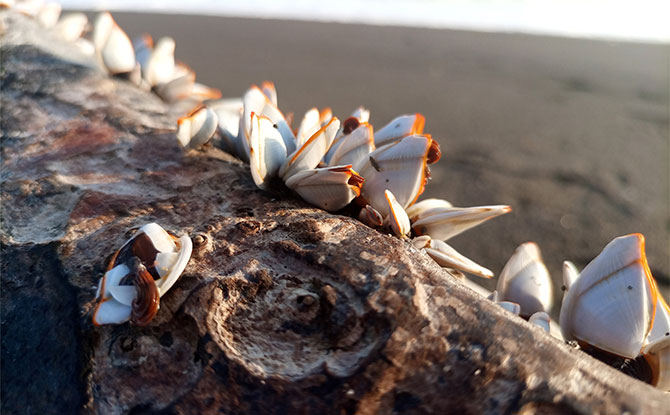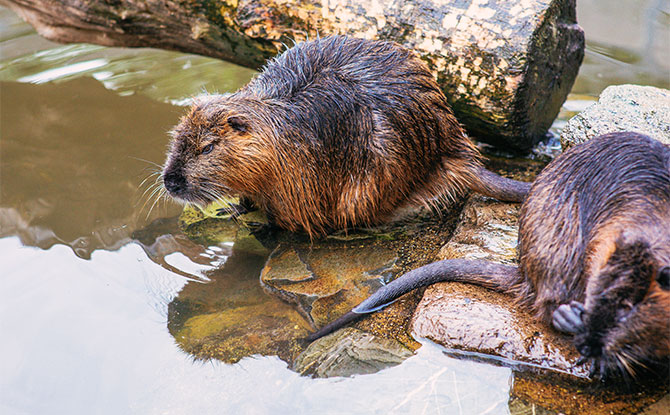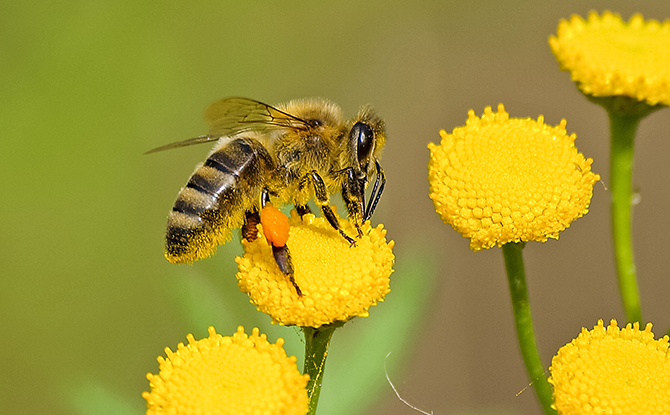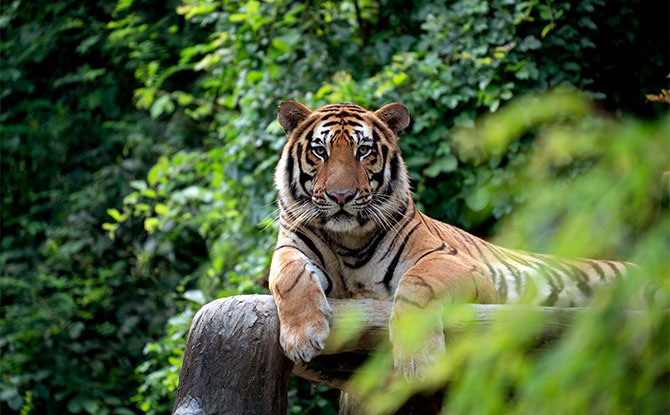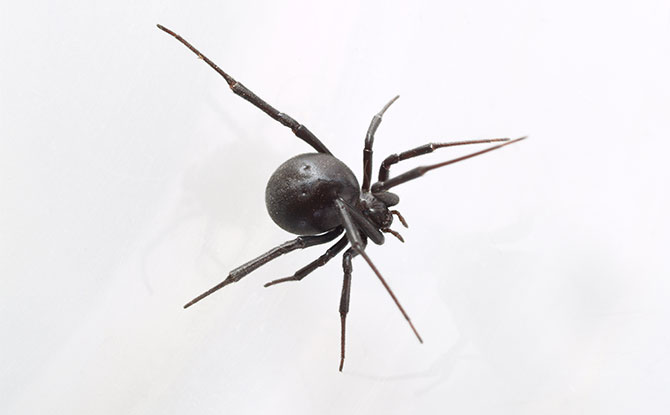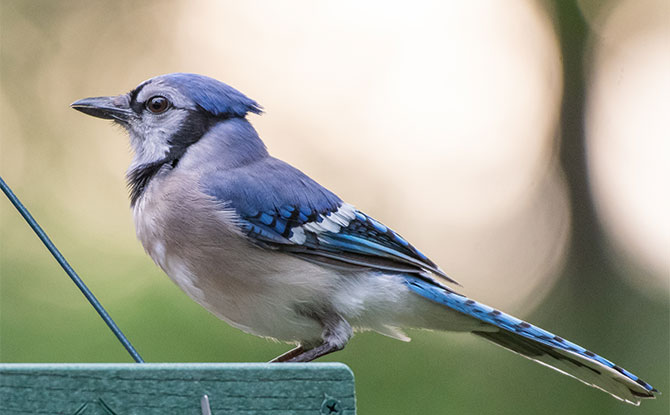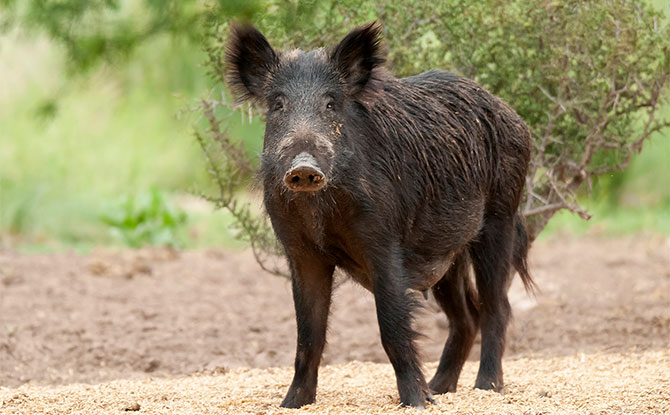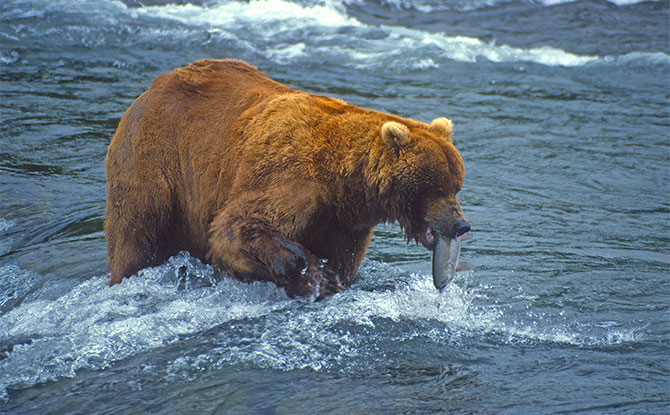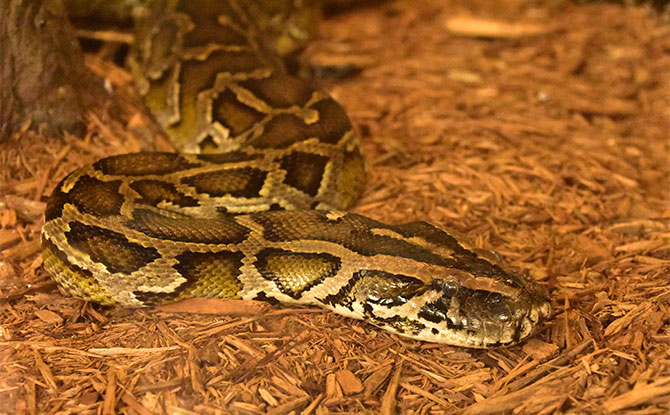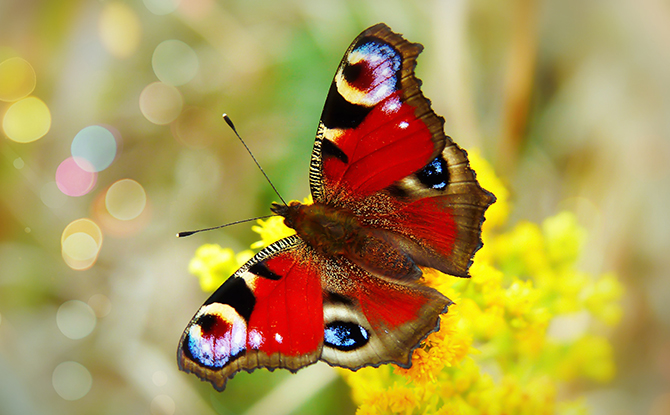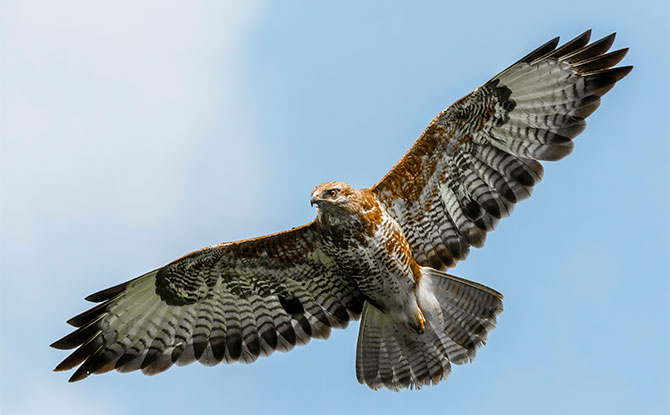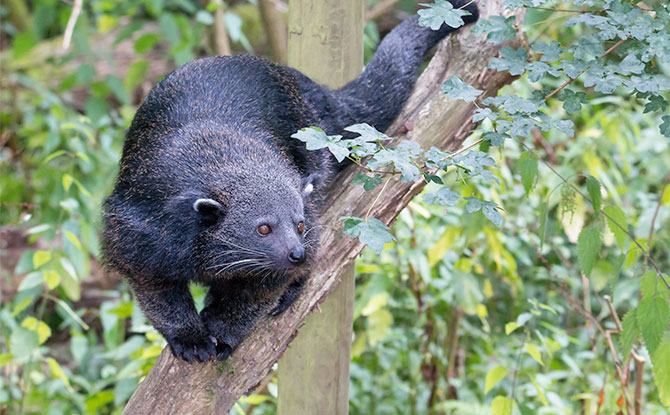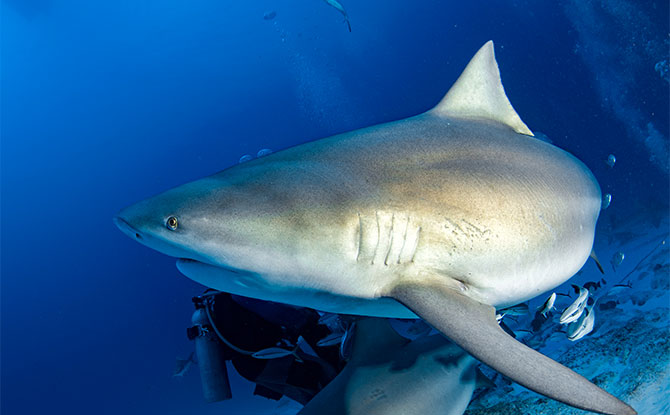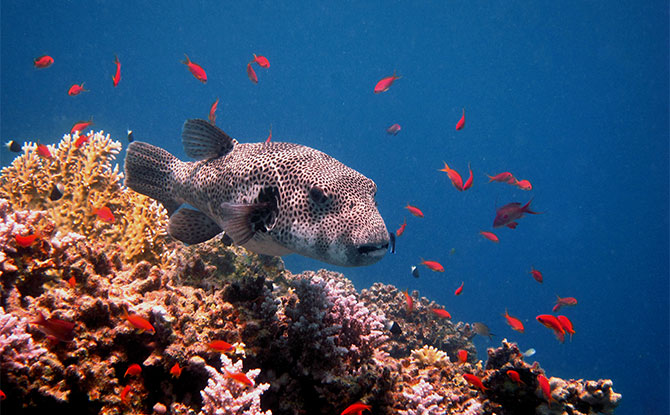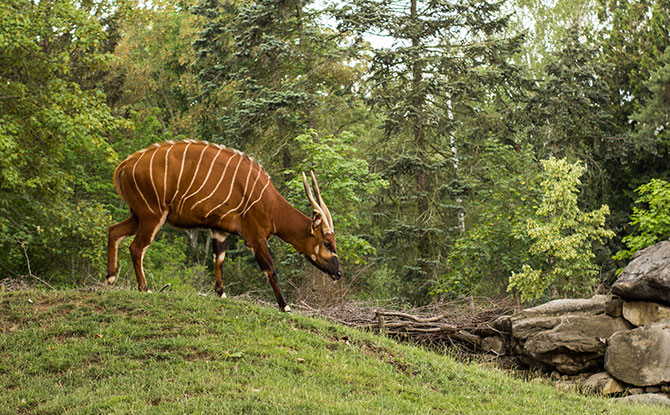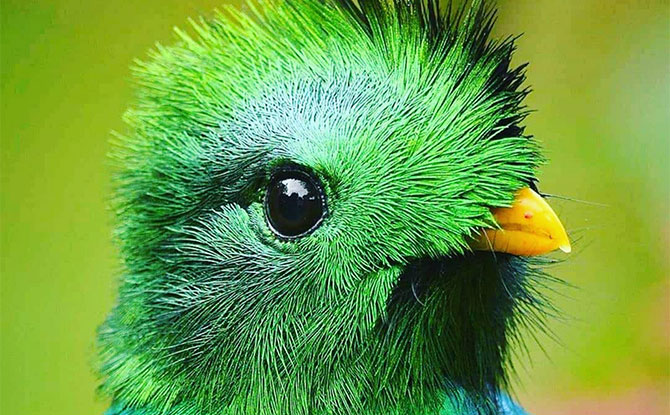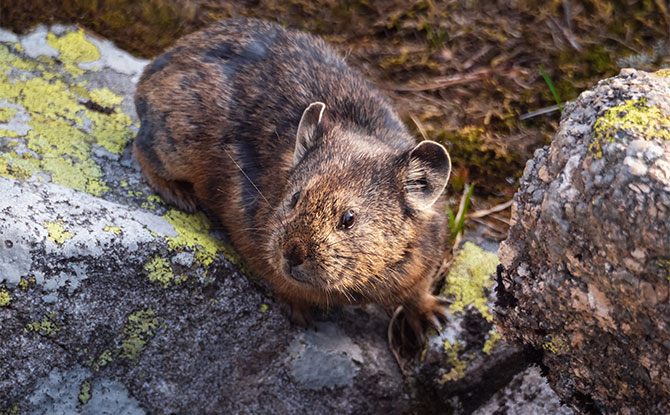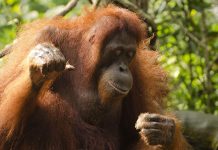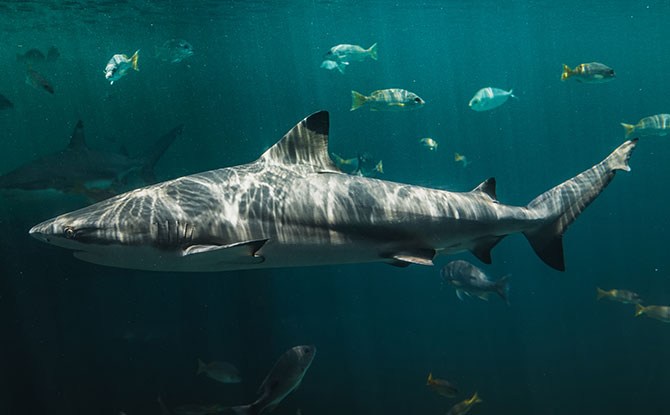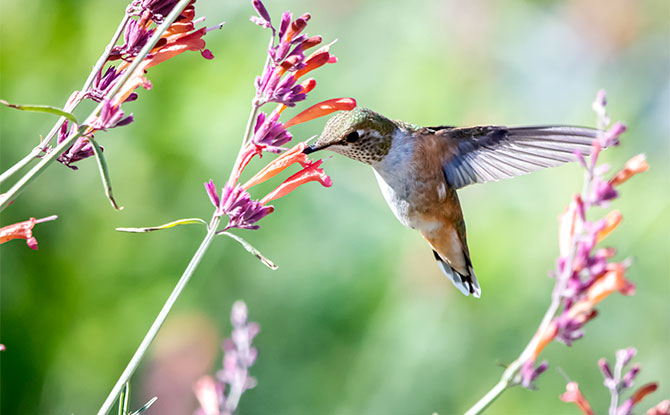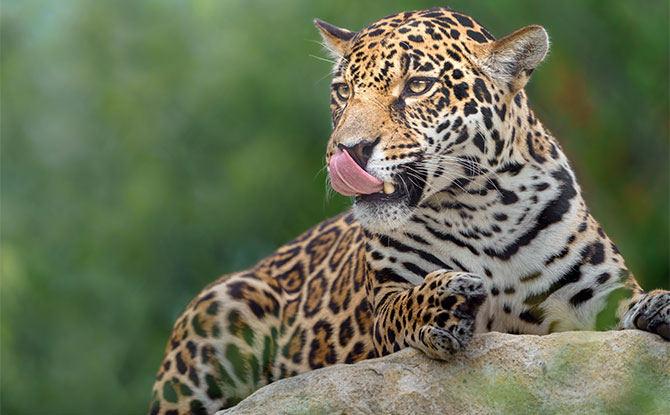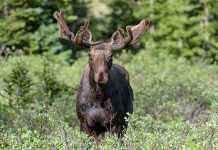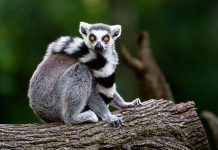
Are you ready to dive into the fascinating world of animals? In this article, we will take you on an exciting journey through the animal kingdom, exploring a diverse range of creatures that all have one thing in common – they start with the letter B! From majestic mammals to mysterious marine life, our comprehensive list of animals starting with B will introduce you to some extraordinary species.
33 Animals Starting With B
Get ready to meet animals starting B like the baboon, one of the largest monkeys in the world, found in Africa, the badger, a furry creature known for its digging abilities and the iconic bald eagle, the national bird of the United States.
Let us explore more fascinating creatures like bees, beetles, bison, black bears, blue jays, and many more. Learn about their habitats, diets, and unique characteristics. Get ready for an unforgettable adventure through the animal kingdom!
Baboon
DINO-TASTIC EXHIBITION: Meet a 40m Long Dino Face-to-Face
GIVEAWAY FOR ENEWSLETTER SUBSCRIBERS: LEGO NINJAGO SET
REGISTER EARLY AND SAVE UP TO $400: English Classes for N1 to Secondary
The baboon is one of the largest monkeys in the world and can be found throughout Africa and Arabia. These fascinating primates belong to the genus Papio, and there are five different species of baboons: the olive baboon, yellow baboon, chacma baboon, Guinea baboon, and sacred baboon.
The olive baboon (Papio anubis) is the most widespread baboon species and is known for its olive-colored fur. They reside primarily in eastern, central, and southern Africa. The yellow baboon (Papio cynocephalus) gets its name from its distinctive golden fur. They can be found in Angola, Zambia, and southwestern Africa.
The chacma baboon (Papio ursinus) is the largest of all baboon species and has a range that stretches from the southern tip of Africa to Ethiopia. The Guinea baboon (Papio papio) is found in Guinea, Senegal, and Mali, while the sacred baboon (Papio hamadryas) inhabits the Horn of Africa and parts of Saudi Arabia.
Each baboon species has its own unique characteristics, habitat preferences, and distribution. They are highly adaptable primates that have successfully thrived in a variety of environments, including savannahs, woodlands, and rocky areas. Baboons are known for their complex social structures and intelligent behavior, making them fascinating subjects of study for primatologists.
Badger
Badgers are furry animals that belong to the weasel family. They are known for their digging abilities and can be found in both Europe and North America. Badgers create complex burrow systems called setts, which provide them with shelter and protection.
These underground dwellings serve as their homes, where badgers sleep, raise their young, and hibernate during the winter months. The burrows are intricate and can consist of multiple entrances, chambers, and tunnels, providing a safe haven for the badgers.
Badgers are highly skilled diggers, using their strong claws and muscular bodies to excavate the soil and create these extensive burrows. The burrows can extend several meters underground, allowing the badgers to navigate and live beneath the earth’s surface.
The setts are not only homes for the badgers but also serve as meeting places for social interaction, communication, and group activities. Badgers are social animals and live in family groups known as clans. These clans consist of multiple individuals, including an adult pair, their offspring, and sometimes other related badgers.
Within the setts, badgers have designated sleeping areas, nurseries for raising their cubs, and chambers for storing food. The burrows also provide protection from predators and adverse weather conditions, making them essential for the survival and well-being of badgers.
Although badgers are mainly nocturnal animals, they can occasionally be seen during the day, especially in areas with less human activity. They are omnivorous and have a varied diet consisting of earthworms, insects, small mammals, birds, fruits, and roots.
Badgers are fascinating creatures, and their burrowing behavior is an integral part of their natural history. Their intricate setts not only serve as their homes but also contribute to the ecosystems in which they live. By digging and creating burrows, badgers help aerate the soil, providing benefits for other animals and plants in their habitats.
Bald Eagle
The bald eagle, also known as Haliaeetus leucocephalus, is the national bird of the United States. This majestic bird is revered for its symbolism and beauty. Found primarily in North America, the bald eagle is a carnivorous bird that holds a prominent place in American culture.
With its distinctive white head and tail feathers, the bald eagle is easily recognizable. Its wingspan can reach up to 8 feet, making it an impressive bird of prey. The bald eagle is highly skilled in flight, soaring effortlessly across the sky as it scans the landscape for its next meal.
As a carnivorous bird, the bald eagle’s diet consists mainly of fish. It is an opportunistic hunter with a remarkable ability to catch fish from bodies of water, including lakes, rivers, and coastal areas. With its sharp talons and powerful beak, the bald eagle swoops down to seize its prey with precision and strength.
The significance of the bald eagle as the national bird of the United States reflects its symbolism of strength, freedom, and resilience. It is a powerful emblem that represents the spirit of America and its natural beauty.
Bandicoot
Bandicoots are fascinating small mammals that are native to Australia. These marsupials have a unique body structure, with strong forelimbs and a long, pointed snout. They belong to the family Peramelidae, which includes several species such as the Eastern Barred Bandicoot, the Long-nosed Bandicoot, and the Northern Brown Bandicoot.
Bandicoots are primarily insectivorous, feeding on a variety of insects, larvae, and spiders. However, they are also known to consume small reptiles, birds, and seeds. Their diet and foraging behavior make them important contributors to the ecosystem, as they help control insect populations and aid in seed dispersal.
Bandicoots are well adapted to the Australian environment. They are able to dig burrows in the ground, which serve as their homes and provide protection from predators. These burrows also help them escape the extreme heat and find refuge during the day.
Due to habitat loss and predation by introduced species, many bandicoot species are now considered threatened or endangered. Conservation efforts are being made to protect their habitats and promote their population recovery. Bandicoots are an important part of Australia’s unique biodiversity and preserving their existence is crucial for maintaining a healthy ecosystem.
Barnacle
Barnacles are fascinating marine crustaceans that play a vital role in our marine ecosystems. These filter-feeding creatures are known for their unique ability to attach themselves to hard surfaces, such as rocks, shells, and ship hulls.
Barnacles come in a variety of shapes, sizes, and colors, with over 1,400 known species worldwide. Their hard exoskeletons provide them with protection and stability, allowing them to withstand the powerful forces of the ocean.
As filter feeders, barnacles extend feathery appendages called cirri into the surrounding water, capturing plankton and other small organisms. They then draw in these tiny particles, extract the nutrients they need, and expel the waste.
Their feeding habits make barnacles not only important members of the marine food chain but also effective natural filters, helping to maintain water quality by removing particles and detritus from the surrounding environment.
In addition to their ecological significance, barnacles have also intrigued scientists and marine enthusiasts for centuries. Their ability to adapt to a wide range of habitats and their unique reproductive strategies make them a subject of scientific study and fascination.
So, the next time you spot a barnacle clinging to a rock or the side of a ship, take a moment to appreciate the incredible adaptability and importance of these marine crustaceans.
Barn Owl
The barn owl is a magnificent nocturnal bird of prey that has captivated people around the world with its unique features and remarkable hunting abilities. This species, scientifically known as Tyto alba, is famous for its heart-shaped facial disc, which is composed of special feathers that help funnel sound towards its ears and allow it to locate prey with extraordinary precision.
One of the most distinguishing characteristics of the barn owl is its silent flight. Unlike other birds, barn owls have specially adapted feathers that reduce turbulence and muffle the sound of their wings flapping, enabling them to approach their prey stealthily. This silent flight is essential for their hunting success as it allows them to surprise their prey without being detected.
As a nocturnal predator, the barn owl has highly developed senses that help it navigate and find food in the dark. Its large eyes are adapted to gather as much light as possible, and its keen hearing allows it to pinpoint the slightest rustle or movement of its prey. This combination of excellent vision and remarkable hearing makes the barn owl a formidable nighttime hunter.
Feeding primarily on small mammals, such as mice, rats, and voles, the barn owl plays an important role in controlling their populations. It is estimated that a single barn owl can consume hundreds of rodents each year, making them effective natural pest control agents for farmers and landowners.
The barn owl has a wide distribution, inhabiting various regions across the globe, including North America, Europe, Asia, and Africa. They typically make their homes in open fields, grasslands, farmlands, and woodlands, nesting in tree cavities, barns, or even man-made nest boxes.
This remarkable species has been the subject of fascination and admiration for centuries, appearing in folklore, mythology, and even popular literature. Its intriguing appearance, silent flight, and hunting prowess make the barn owl an iconic symbol of the night and a captivating creature of the animal kingdom.
Barracuda
Barracudas are one of the most fascinating predator fish found in saltwater habitats worldwide. With their long, sleek bodies and razor-sharp teeth, these agile swimmers are built for speed and efficiency in hunting. Whether lurking in coral reefs or patrolling open waters, barracudas strike fear into the hearts of their prey.
These formidable creatures have evolved to be fast swimmers, allowing them to outpace their victims with ease. Using their streamlined bodies, they can swiftly maneuver through the water, propelled by their powerful tails. Barracudas are known for their lightning-fast attacks, snatching their prey within seconds.
In addition to their speedy hunting techniques, barracudas are also renowned for their predatory instincts. They have a keen sense of sight and can detect even the smallest movements in the water. Their ability to strike with precision makes them a fearsome predator in the ocean.
Found in saltwater environments, barracudas are well-adapted to the challenges of their habitat. They are capable of tolerating varying salinity levels, allowing them to thrive in a range of coastal areas, including coral reefs, mangroves, and seagrass beds.
The presence of barracudas is vital for maintaining the balance of marine ecosystems. As top-level predators, they help regulate the populations of smaller fish and ensure the overall health of the marine food chain.
Bat
Bats are fascinating creatures that belong to the order Chiroptera, making them the only mammal capable of sustained flight. They are nocturnal animals, meaning they are most active during the night. Bats have adapted to their nighttime lifestyle by developing exceptional navigation skills using echolocation.
Echolocation is a unique ability possessed by bats that allows them to emit high-frequency sounds and interpret the echoes that bounce back from objects in their environment. This remarkable sense enables bats to navigate in complete darkness, locate their prey, and avoid obstacles while flying.
As flying mammals, bats play crucial roles in various ecosystems. They are essential pollinators for many plants, including those that produce bananas, mangoes, and agave (the plant used to make tequila). Bats also contribute to pest control by consuming vast quantities of insects, helping to keep their populations in check.
There are over 1,400 species of bats, making them one of the most diverse groups of mammals. They come in various sizes, from the tiny bumblebee bat, which is about the size of a bumblebee, to the larger fruit bats with wingspans of up to six feet. Bats can be found in almost every part of the world, except for extremely cold regions.
Despite their nocturnal nature and their association with Halloween imagery, bats are gentle and shy creatures that prefer to avoid human interaction. However, it is essential to remember that like any wild animal, bats should not be handled without proper training, as some species may carry diseases such as rabies.
Beaver
Beavers are fascinating aquatic mammals that can be found in North America and Europe. These industrious creatures are well-known for their impressive dam-building abilities and their role in creating waterways.
With their sharp teeth and powerful tails, beavers are able to fell trees and construct dams that can alter the course of rivers and streams. These dams serve various important functions, including providing habitat for a diverse range of animals and helping to regulate water flow.
Beavers are excellent engineers, constructing intricately designed dams using branches, logs, and mud. The resulting structure creates ponds and wetlands that support a rich ecosystem, attracting other aquatic mammals, birds, and fish.
In addition to their impressive dam-building skills, beavers are also skilled swimmers. They have webbed feet and a paddle-shaped tail, which makes them well-adapted to their aquatic lifestyle. Their ability to stay submerged for long periods of time and their strong swimming capabilities enable them to navigate through water with ease.
Beavers are primarily herbivorous, feeding on a diet of bark, leaves, and aquatic plants. Their unique set of teeth, including the large front incisors that never stop growing, allows them to efficiently consume and process woody plant material.
These amazing creatures play a crucial role in shaping their environment. Their dams contribute to flood prevention, water purification, and the creation of wetland habitats. By altering the landscape, beavers have a profound impact on the ecosystems they inhabit.
Bedbug
Bedbugs are parasitic insects that feed on the blood of warm-blooded animals, including humans. These small bloodsucking insects are considered pests and can cause great annoyance and discomfort when they infest beds and furniture.
Bedbugs are known for their resilience and ability to survive in various environments. They are excellent hitchhikers and can easily be transported from place to place through luggage, clothing, or furniture. Once inside a home or establishment, they quickly establish themselves, hiding in cracks, crevices, and furniture upholstery.
One of the telltale signs of a bedbug infestation is waking up with itchy, red, and swollen bites in a pattern of lines or clusters on the skin. While their bites may be irritating, bedbugs are not known to transmit diseases.
Controlling bedbugs can be difficult as they are adept at hiding and have become resistant to many common pesticides. To effectively eliminate a bedbug infestation, it is recommended to seek professional intervention. Pest control experts have the knowledge and tools to employ integrated pest management techniques, including targeted treatments and thorough inspections, to eradicate bedbugs and prevent their reinfestation.
Prevention is key in avoiding bedbug infestations. When staying in hotels or other accommodations, it is important to inspect the bedding, mattress, and furniture for signs of bedbugs. It is also advisable to keep luggage elevated and away from the bed to minimize the risk of bringing bedbugs home. Regularly vacuuming, laundering bedding and clothing in hot water, and sealing cracks and crevices can also help in preventing bedbug infestations.
Although bedbugs can be a persistent nuisance, taking proactive measures and seeking professional help can help ensure a bedbug-free environment.
Bee
Bees are essential pollinators in our ecosystem. They play a crucial role in the reproduction of flowering plants by collecting nectar and pollen. As they move from flower to flower, bees unknowingly transfer pollen, allowing plants to produce seeds and fruit. This process, known as pollination, is vital for the growth and survival of many plant species.
In addition to their pollination services, bees are remarkable creatures known for their incredible social behavior. They live in organized colonies, with each individual having specific roles and tasks within the hive. The hive is structured with a queen bee, worker bees, and drones. The queen bee is responsible for laying eggs and maintaining the harmony of the colony. The worker bees, which are female, perform tasks such as collecting nectar, building and maintaining the hive, and caring for the young. The drones, which are male, have the primary role of mating with the queen bee.
One fascinating byproduct of the bees’ pollination efforts is honey. Bees collect nectar from flowers and store it in their honey stomachs. Once back at the hive, they pass the nectar to other worker bees, who chew and process it with enzymes before depositing it into the honeycomb. The bees then fan their wings to evaporate excess moisture from the nectar, resulting in the creation of honey. Honey serves as a valuable food source for the bees, providing them with the energy they need to carry out their vital tasks.
Bees are not only important for the natural world but also for human society. Their pollination services benefit agricultural crops, ensuring the production of fruits, vegetables, and seeds that form the basis of our food supply. Honey produced by bees is also highly valued for its nutritional properties and its use in various culinary recipes, remedies, and skincare products.
Read some interesting bee facts for kids.
Beetle
Beetles are a fascinating group of insects, known for their diverse species and unique characteristics. With over 350,000 known species, beetles are incredibly diverse, occupying various habitats around the world.
One of the key features of beetles is their hard exoskeleton, which provides protection and support for their bodies. This exoskeleton is composed of a tough, chitinous material that helps beetles withstand various environmental conditions.
Beetles also undergo a process called complete metamorphosis during their life cycle. They start as eggs, then progress to larvae, pupae, and finally emerge as adults. This transformation allows them to adapt to different ecological niches and utilize different food sources.
When it comes to feeding strategies, beetles have evolved to occupy a wide range of ecological roles. Some beetles are herbivorous, feeding on plants and playing important roles in pollination and seed dispersal. Others are predaceous, preying on other insects and helping to control populations. Some beetles even scavenge on decaying matter, contributing to nutrient recycling in ecosystems.
Overall, beetles are a remarkable group of insects that have adapted to thrive in diverse environments. Their varied species and ecological roles make them an important part of our natural world.
Bengal Tiger
The Bengal tiger, also known as Panthera tigris tigris, is a majestic subspecies of tiger found primarily in India. It is the largest tiger subspecies and is known for its incredible strength, agility, and beauty. Bengal tigers have a distinct coat pattern of orange with black stripes, making them truly iconic and awe-inspiring.
Unfortunately, the Bengal tiger is critically endangered due to various threats, including habitat loss and poaching. The rapid expansion of human populations has resulted in the destruction of their natural habitats, pushing these incredible creatures to the brink of extinction. Furthermore, the demand for tiger parts in illegal wildlife trade poses a significant threat to their survival.
As carnivorous animals, Bengal tigers play a crucial role in balancing the ecosystem in which they reside. They are top-level predators and maintain the population of herbivores in check, ensuring a healthy and sustainable environment. Conservation efforts are vital to protect these magnificent creatures and preserve their habitats.
India has taken significant steps towards protecting the Bengal tiger. The country has established many national parks, wildlife sanctuaries, and tiger reserves to provide safe havens for these majestic creatures. These protected areas serve as crucial habitats and breeding grounds for tiger populations, allowing them to thrive and increase in numbers.
Efforts are also being made to reduce human-wildlife conflict and raise awareness about the importance of conserving these iconic animals. Community involvement and education play a significant role in ensuring the long-term survival of the Bengal tiger, as well as other species that share its habitat.
Preserving the Bengal tiger is not only essential for its own sake but also for the overall health and balance of India’s ecosystems. By protecting these magnificent creatures, we are safeguarding the biodiversity and natural heritage of our planet for future generations.
Bison
Bison, also known as American buffalo, are large herbivorous mammals native to North America. These iconic creatures once roamed the vast plains of North America in massive herds, playing a crucial role in the natural ecosystem. However, due to extensive hunting and habitat loss, bison were nearly driven to extinction in the late 19th century.
Fortunately, through dedicated conservation efforts, the bison population has made a remarkable recovery. Today, bison can be found in protected areas and national parks across North America, including Yellowstone National Park and Wood Buffalo National Park. These majestic animals are considered a symbol of the American West and hold great cultural and ecological significance.
Bison are well-adapted to the grasslands and prairies of North America. They have a large, muscular body and a distinctive hump on their shoulders. With their massive heads and long, curved horns, bison are known for their powerful appearance. These herbivores primarily graze on grasses and sedges, playing a vital role in shaping and maintaining the grassland ecosystem.
Conservation efforts continue to be important for the long-term survival of bison. This includes preserving and restoring their natural habitats, managing populations, and ensuring genetic diversity.
Black Bear
The black bear, native to North America, is the most common bear species in the region. Known for its adaptability, this omnivorous creature has a varied diet that includes berries, nuts, insects, and small mammals. With its distinctive black fur, the black bear is a versatile and resourceful forager.
One of the unique behaviors of black bears is their hibernation during the winter months. As the temperature drops and food becomes scarce, black bears enter a state of deep sleep to conserve energy. During hibernation, their heart rate slows down, and they can survive for months without eating.
Black bears play a vital role in the ecosystem as seed dispersers. When they consume fruits and berries, they help spread the seeds through their scat, promoting plant growth and diversity in their habitat.
Black Widow Spider
The black widow spider is a venomous web-building spider known for its distinctive black color and red hourglass-shaped marking on the abdomen. Found in North America, it is widely recognized as one of the most venomous spiders in the region. Female black widow spiders, which are larger than males, are particularly known for their potent venom.
The venom of the black widow spider is a neurotoxin that affects the nervous system of its prey, causing muscle paralysis and, in some cases, death. However, despite its reputation, black widow spider bites are relatively rare and fatalities are extremely rare. Most bites occur when the spider feels threatened or cornered.
Black widow spiders are known for their unique web-building abilities. They create intricate, organized webs in dark, secluded areas to catch their prey, which primarily consists of small insects. The web is made of strong silk with irregular patterns that help trap and immobilize unsuspecting prey.
These spiders are commonly found in outdoor areas such as garages, sheds, woodpiles, and other undisturbed spaces. They prefer dark and hidden spots where they can build their webs undisturbed. The black widow spider is a master of hiding and camouflage, making it difficult for humans to spot them.
Blue Jay
The blue jay is a colorful bird native to North America. They are known for their vibrant blue plumage and distinctive crests on their heads. Blue jays are a common sight in forests, parks, and urban areas throughout the continent.
These birds play an important role in seed dispersal. They have a particular fondness for fruits and nuts, which they consume and then spread by dropping or caching the seeds in various locations. This helps promote the growth and diversity of vegetation in their habitats.
In addition to their seed dispersing capabilities, blue jays are also known for their noisy calls and remarkable mimicry abilities. They can imitate the sounds of other birds, animals, and even human voices, adding a touch of musicality to their surroundings.
Blue Whale
The blue whale is the largest animal ever known to have existed. As a baleen whale, it can be found in oceans around the world. With its magnificent size and unique characteristics, the blue whale is a truly awe-inspiring creature.
One of the most remarkable features of the blue whale is its size. Being the largest animal among all the species, it can reach lengths of up to 100 feet and weigh up to 200 tons. Its enormous size is attributed to its specialized feeding mechanism, which involves filter-feeding on tiny krill, a type of shrimp-like crustacean. Feeding mainly on krill, a blue whale can consume several tons of krill in a single day.
Another fascinating aspect of the blue whale is its vocalizations. The low frequency vocalizations produced by these gentle giants can travel long distances through the ocean and serve various communication purposes, including mating calls and maintaining contact with other members of their species.
Despite its massive size, the blue whale primarily feeds on microscopic krill, which it filters through a mass of baleen plates in its mouth. These baleen plates act like a sieve, allowing water to escape while retaining the krill. This unique feeding adaptation has allowed the blue whale to become the largest animal on the planet.
The blue whale’s habitat spans across the vastness of the world’s oceans. From the icy waters of the Arctic to the warmer tropical seas, these majestic creatures can be found in various marine environments. Due to their migratory nature, their presence can be observed in different regions at different times of the year.
Bobcat
The bobcat is a medium-sized wildcat native to North America. With its distinctive tufted ears and short tail, the bobcat is easily recognizable. These skilled hunters rely on their stealth and agility to catch prey, making them formidable predators in their habitats.
Bobcats are predominantly nocturnal, meaning they are most active during the night. This adaptation allows them to take advantage of the darkness to hunt and avoid potential threats. Bobcats have successfully adapted to various habitats across their range, including forests, mountains, and even deserts.
Bottlenose Dolphin
Bottlenose dolphins are highly intelligent marine mammals known for their playful behavior and acrobatic displays. They are found in warm and temperate seas worldwide, except in the Arctic and Antarctic Circle regions. Bottlenose dolphins are highly social animals, living in pods and displaying complex social structures.
Boar
The boar, with its robust build and distinctive tusks, embodies strength and resilience in the animal kingdom. Its coarse, bristly fur, often in shades of brown or black, provides both protection and camouflage in its natural habitat.
With a keen sense of smell and sharp hearing, the boar navigates its surroundings with precision, displaying a remarkable level of intelligence and adaptability. Known for its assertive demeanor, especially during mating season, the boar can exhibit aggressive behavior when threatened or cornered.
Despite its formidable reputation, the boar also demonstrates a nurturing side, fiercely protecting its young from predators. In folklore and mythology, the boar symbolizes courage, fertility, and the untamed forces of nature, leaving an enduring impression as a symbol of wild strength and vitality.
Box Jellyfish
The box jellyfish is a venomous marine creature that can be found in coastal waters around the world. It is known for its transparent bell-shaped body and long tentacles lined with venomous stingers. Box jellyfish are capable of delivering painful and potentially life-threatening stings to humans.
Brown Bear
The brown bear is a majestic species that can be found in both North America and Eurasia. Known for its distinctive hump of muscle on its shoulders, the brown bear is an iconic symbol of the wild. With its adaptable nature, this omnivorous creature thrives in diverse habitats, including forests, mountains, and tundra.
North American brown bears, also known as grizzly bears, are primarily found in Alaska, Canada, and parts of the United States. They have a rich, brown fur that ranges in color from light golden to dark brown. Eurasian brown bears, on the other hand, can be found throughout Europe and Asia, including countries such as Russia, Finland, and Romania.
As omnivores, brown bears have a varied diet that consists of both plant matter and meat. They are opportunistic foragers, feeding on vegetation like berries, grasses, and nuts, as well as small mammals, fish, and even carrion. This adaptability allows them to survive in different environments and plays a vital role in maintaining the balance of ecosystems.
Despite their size and strength, brown bears are not solely predators. They are known to scavenge for food, taking advantage of carcasses left behind by other animals. This scavenging behavior ensures that no resource goes to waste and enables these bears to capitalize on whatever food is available.
Buffalo
Buffalo, also known as Asian water buffaloes or Cape buffaloes, are large herbivorous mammals native to Africa and Asia. These magnificent creatures are known for their impressive size, strength, and iconic presence on the grasslands and wetlands of their respective regions. With their powerful build and sturdy horns, buffaloes command attention and respect in their natural habitats.
Buffaloes are highly adapted to herbivory, feeding mainly on grasses, herbs, and aquatic plants. Their robust digestive systems allow them to extract maximum nutrition from these plant-based food sources, sustaining their massive bodies. It’s fascinating to observe these majestic animals as they graze peacefully in the open landscapes, showcasing their role as vital herbivores in their ecosystems.
One interesting aspect of buffalo behavior is their symbiotic relationship with a bird species known as oxpeckers. These birds perch on the backs of buffaloes and feed on parasites such as ticks and fleas, which helps cleanse the buffalo’s skin and rid it of potential harm. This mutually beneficial partnership exemplifies the fascinating interconnectedness present in the natural world.
Africa and Asia are home to different buffalo species, each with its own unique characteristics. In Africa, the Cape buffalo, also known as the African buffalo, roams the savannas and woodlands, forming large herds that are a sight to behold. In Asia, the Asian water buffalo, or domesticated buffalo, plays a significant role in agricultural activities, serving as working animals and providers of milk and meat.
While buffaloes are known for their resilience and adaptability, they face increasing threats from habitat loss, poaching, and disease. Conservation efforts are crucial in ensuring their survival and the preservation of their habitats. These extraordinary animals are not only a symbol of strength and grace but also an integral part of the natural heritage of Africa and Asia.
Bullfrog
The bullfrog is a large amphibian species found in North America. It is known for its loud, deep croaking call, which is heard during the breeding season.
Bullfrogs have powerful hind legs, enabling them to jump long distances. They are voracious eaters and will prey on insects, small mammals, and even other frogs.
To get really “hoppy”, you may enjoy these funny frog jokes.
Burmese Python
The Burmese python is a large snake native to Southeast Asia, known scientifically as Python bivittatus. It is one of the largest snake species in the world, capable of reaching lengths of up to 23 feet. Burmese pythons are strong and muscular reptiles, with an impressive ability to constrict their prey.
These pythons are highly adaptable and have become an invasive species in certain regions, most notably in the Everglades of Florida. The introduction of Burmese pythons into this ecosystem has had detrimental effects on the native wildlife. Their population has rapidly increased, disrupting the natural balance and preying on native species.
Burmese pythons are known to prey on a variety of mammals, birds, and reptiles, including endangered species. Their large size and ability to thrive in diverse habitats have contributed to their successful colonization of new territories.
Butterfly
Butterflies are fascinating insects known for their vibrant colors and graceful flight. These delicate creatures have captivated the imagination of humans for centuries with their beauty and magical transformation. One of the most remarkable aspects of butterflies is their metamorphosis process.
Butterflies start their lives as caterpillars, consuming leaves and growing in size. During this stage, they undergo various molts to shed their outer skin and continue their growth. Once the caterpillar reaches its full size, it forms a chrysalis or pupa, enclosing itself in a protective casing.
Inside the chrysalis, the caterpillar undergoes a remarkable transformation. It goes through a process called metamorphosis, where its body undergoes significant changes. Within the pupa, the caterpillar’s organs dissolve and reform into completely new structures. This process takes time, and after a few weeks, a adult butterfly emerges from the chrysalis.
The transformation from a crawling caterpillar to a beautiful butterfly is a symbol of metamorphosis and rebirth. Butterflies are often associated with change, growth, and new beginnings.
Butterflies possess intricate and colorful wings that are essential for their survival. These wings not only allow them to fly but also play a vital role in attracting mates and repelling predators. The patterns and colors on the wings vary among different butterfly species and are often used for camouflage or to signal potential mates.
As pollinators, butterflies play a crucial role in the ecosystem. While feeding on nectar, they unintentionally transfer pollen from one flower to another, facilitating plant reproduction. This process ensures the survival of countless plant species and supports the overall health of ecosystems.
Butterflies can be found in various habitats worldwide, from forests to meadows, and even urban gardens. Their enchanting presence brings joy to people of all ages, and many cultivate gardens specifically designed to attract these delightful creatures.
The butterfly’s lifecycle and exquisite beauty have made it a popular subject in art, literature, and folklore. Their ephemeral existence reminds us to appreciate the fleeting beauty of life and embrace change and transformation.
Learn more interesting butterfly facts for kids.
Buzzard
Buzzards are fascinating birds of prey that belong to the raptor family. These majestic creatures are known for their keen eyesight and impressive soaring flight. Found in various parts of the world, buzzards are opportunistic feeders with diverse hunting habits.
As scavengers, buzzards play an important ecological role by cleaning up carrion and preventing the spread of disease. They have a strong sense of smell that aids them in locating food sources. In addition to scavenging, buzzards are skilled hunters. They primarily target small mammals, birds, and reptiles.
Buzzards are also known for their exceptional circling flight pattern, using thermal updrafts to effortlessly glide through the sky. Their broad wings and lightweight body allow them to cover vast distances in search of food and territory.
Although commonly referred to as buzzards, these birds are not true buzzards in the scientific sense. The term “buzzard” is often used to describe a variety of raptors worldwide, including species such as red-tailed hawks and western honey buzzards.
Bull
Bulls are male bovines, specifically domesticated cattle. They are larger and more muscular than cows and are primarily used for breeding purposes within the livestock industry. Bulls play a crucial role in maintaining healthy and productive herds. Their natural behavior during mating seasons involves displaying dominance and engaging in battles with other males to establish hierarchy and secure mating rights.
In addition to their reproductive significance, bulls are valuable livestock animals for meat and dairy production. They provide high-quality beef and contribute to the dairy industry by producing superior genetics for breeding cows. The meat obtained from bulls is known for its rich flavor and tenderness, making it highly sought after by consumers.
Domestication has resulted in bulls having a calmer temperament compared to their wild counterparts. With proper handling and management, bulls can be trained to be docile and cooperative. Nevertheless, it is essential to exercise caution around bulls and understand their natural instincts to maintain safety.
Binturong
The binturong, also known as the bearcat, is a fascinating mammal native to Southeast Asia. With its unique appearance that resembles a mix between a bear and a cat, the binturong is a captivating creature that has captured the curiosity of many. But what makes the binturong truly remarkable is its arboreal nature, spending much of its time in trees.
Living in the dense forests of Southeast Asia, the binturong has adapted to an arboreal lifestyle. It navigates treetops with ease, using its sharp claws and strong limbs to move through the canopy. Hanging from branches or perching on high tree limbs, the binturong blends seamlessly into its arboreal habitat.
One of the distinctive features of the binturong is its strong odor, often described as smelling like popcorn. This odor is produced by a scent gland located on the binturong’s tail, which is used for marking its territory and communicating with other binturongs. While the smell may be off-putting to some, it plays an important role in the binturong’s social interactions.
As an important member of Southeast Asia’s ecosystem, the binturong plays a crucial role in seed dispersal. When the binturong consumes fruits or seeds, it often passes them through its digestive system undamaged. This helps to spread seeds to new areas, contributing to the growth and diversity of the region’s plant life.
Bull Shark
The bull shark is a shark species known for its aggressive behavior and ability to tolerate freshwater environments. They can be found in coastal waters around the world, including rivers and estuaries.
Bull sharks are considered one of the most dangerous shark species due to their propensity to enter shallow waters frequented by humans. Their ability to tolerate both saline and fresh water allows them to venture into rivers and lakes, making them a formidable predator even in unexpected locations.
One of the distinguishing features of bull sharks is their stocky build and broad, flat snout. This physical adaptation allows them to navigate in murky waters more effectively and locate prey. They have powerful jaws filled with sharp teeth, enabling them to catch and consume a wide range of marine and freshwater species.
As opportunistic feeders, bull sharks have a diverse diet that includes fish, turtles, seabirds, mammals, and even other sharks. Their aggressive nature and versatility make them a top predator in many coastal ecosystems.
Coastal regions, such as estuaries and river mouths, serve as important nursery grounds for bull sharks. Pregnant females often seek shelter in these areas to give birth to their young, which helps ensure the survival and growth of the species.
Despite their aggressive reputation, bull sharks are an important part of marine ecosystems. Their role as top predators helps maintain a balanced ecosystem by regulating the population of their prey species. Their ability to adapt to various environments and tolerate freshwater makes them a resilient and successful shark species.
Blowfish
Blowfish, also known as pufferfish, are fascinating fish with a unique defense mechanism. When threatened by predators, they have the ability to inflate themselves into a round and spiky shape, making it difficult for their attackers to swallow them. This inflatable behavior serves as a deterrent and protects the blowfish from potential harm.
One of the remarkable adaptations of blowfish is their production of a toxin called tetrodotoxin, which is highly poisonous. This potent toxin is present in various parts of their body, including the liver, skin, and ovaries. It acts as a powerful defense mechanism, deterring predators from preying on blowfish due to the risk of poisoning.
Despite the toxicity of blowfish, they are considered a delicacy in some cuisines, particularly in Japan, where it is known as fugu. However, the preparation of blowfish for consumption is a highly specialized skill that requires expert knowledge and strict regulations. Chefs undergo rigorous training to ensure the safe removal of toxins before serving blowfish dishes.
The adaptation of blowfish to inflate themselves and their production of tetrodotoxin are remarkable examples of their survival strategies in the face of predation. These unique characteristics make blowfish an intriguing species in the world of marine life and a subject of fascination for scientists, divers, and food enthusiasts alike.
Bongo
The bongo, a large antelope species native to the dense rainforests of Central Africa, is a true symbol of beauty and grace. With its stunning reddish-brown coat adorned with white stripes and spots, the bongo commands attention in its natural habitat. Its long, spiral-shaped horns add to its majestic presence.
However, despite its remarkable appearance, the bongo faces numerous challenges that make it an endangered species. One of the primary threats to its survival is habitat loss. As human settlements and agriculture continue to encroach upon its natural habitat, the bongo’s range is shrinking, leaving it with less space to roam and find food.
Another contributing factor to the bongo’s endangered status is hunting. While hunting the bongo has been prohibited in many areas, illegal poaching still poses a significant threat. The bongo’s elusive nature and preference for dense vegetation make it difficult to track, but sadly, demand for its meat and horns persists, driving the illegal wildlife trade.
Conservation efforts are underway to protect the bongo and ensure its long-term survival. These efforts focus on preserving its habitat, strengthening anti-poaching measures, and raising awareness about the importance of protecting this iconic antelope species. By working together, we can give the bongo a fighting chance and help maintain the rich biodiversity of the African rainforests.
If you enjoyed this story, we think that you will also enjoy this one on animals that start with A or this list of animals that start with C.







